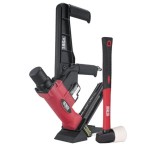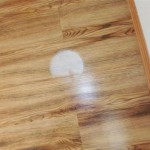Temporary Outdoor Flooring Solutions for Dirt Surfaces
Creating functional and aesthetically pleasing outdoor spaces often involves addressing the challenges posed by uneven or unsuitable ground surfaces, particularly dirt. Temporary outdoor flooring provides a versatile and practical solution for converting these spaces into usable areas for a variety of purposes, ranging from events and construction sites to personal recreational zones. The selection of appropriate temporary flooring materials and installation methods is crucial for ensuring safety, durability, and the desired aesthetic outcome.
Temporary flooring over dirt offers several advantages. It mitigates dust and mud, providing a cleaner environment. It creates a more level and stable surface, reducing tripping hazards. It protects the underlying soil from compaction and erosion. And, it can dramatically enhance the visual appeal of an outdoor space, transforming a barren area into an inviting and functional environment.
Key Considerations Before Installation
Prior to installing temporary outdoor flooring over dirt, several factors must be assessed to determine the optimal flooring solution. These factors include the intended use of the space, the expected traffic volume, the prevailing weather conditions, and the desired lifespan of the flooring installation. Understanding these parameters will inform decisions regarding material selection, sub-base preparation, and drainage considerations.
The intended use of the space directly influences the type of flooring required. A light-use area for a garden party, for example, will have different flooring needs compared to a high-traffic construction site access route. Considerations must also be given to the types of activities planned. Will there be dancing, heavy equipment, or food and beverage service? These activities will impact the flooring's necessary load-bearing capacity, slip resistance, and ease of cleaning.
Expected traffic volume is another critical determinant. High-traffic areas necessitate more durable and resilient flooring materials capable of withstanding constant wear and tear. For instance, a temporary walkway during a festival requires materials designed for heavy foot traffic and potential wheeled traffic like strollers or wheelchairs. The higher the expected traffic, the more robust the flooring and underlying support structure needs to be.
Prevailing weather conditions, including rainfall, temperature fluctuations, and sunlight exposure, require careful consideration. Flooring materials must be weather-resistant and capable of withstanding the elements without significant degradation. For example, in areas prone to heavy rainfall, proper drainage is essential to prevent water accumulation and potential slippage. Similarly, UV-resistant materials are necessary in sunny climates to prevent fading and cracking.
The desired lifespan of the flooring installation impacts material choice and installation techniques. A short-term solution for a single event might warrant lighter-duty, more cost-effective materials. Conversely, a longer-term solution, such as temporary flooring for a construction site lasting several months, may necessitate more durable and weather-resistant materials engineered for extended use.
Common Types of Temporary Outdoor Flooring Materials
A variety of materials are available for creating temporary outdoor flooring over dirt, each with its own advantages and disadvantages. The selection depends on the factors discussed previously, balanced with budget constraints and aesthetic preferences. Among the most common options are interlocking tiles, rolled flooring, and wooden planks.
Interlocking tiles, typically made of plastic or rubber, offer ease of installation and portability. They are often designed with drainage holes to prevent water accumulation and provide a relatively slip-resistant surface. These tiles are well-suited for pedestrian traffic and light-duty applications like patios, event spaces, and walkways. Their modular design allows for easy customization and re-configuration of the flooring area.
Rolled flooring, often made of rubber or durable plastic, provides a seamless surface and is available in various widths and lengths. It is easy to install by simply unrolling and securing the edges. Rolled flooring is suitable for covering large areas quickly and efficiently, making it a common choice for temporary walkways, event venues, and construction site access routes. Its seamless nature minimizes tripping hazards and facilitates cleaning.
Wooden planks, either solid wood or composite materials, offer a more natural aesthetic and can provide a sturdy and level surface. They require more involved installation, often involving a supporting framework to ensure stability and prevent sinking into the dirt. Wooden planks are a good option for creating temporary decking, walkways, or elevated platforms. However, proper sealing and treatment are essential to protect the wood from moisture damage and rot.
Other materials include geotextile fabrics, which are permeable and allow water to drain while providing a stable base, and gravel or crushed stone, which can be compacted to create a firm surface. These options are often used as a sub-base beneath other flooring materials to improve drainage and load-bearing capacity.
Installation Techniques and Sub-Base Preparation
Proper installation is crucial for ensuring the stability, durability, and longevity of temporary outdoor flooring. The installation process typically involves preparing the sub-base, installing a drainage layer (if necessary), and laying the flooring material. The specific techniques will vary depending on the chosen material and site conditions.
Sub-base preparation is a critical step in ensuring a stable and level surface. This typically involves clearing the area of debris, removing any vegetation, and leveling the ground. For uneven or soft ground, a layer of compacted gravel or crushed stone may be required to provide a solid foundation. The depth of the gravel layer will depend on the soil type and expected load.
Drainage is essential to prevent water accumulation under the flooring, which can lead to instability, slippage, and material degradation. Drainage can be achieved by grading the sub-base to create a slight slope, installing drainage pipes, or using a permeable geotextile fabric. The specific drainage solution will depend on the site's topography and rainfall patterns.
The installation of the flooring material itself will vary depending on the type of material chosen. Interlocking tiles simply snap together, while rolled flooring is unrolled and secured at the edges. Wooden planks require a supporting framework, which can be constructed from lumber or metal. It's vital to follow the manufacturer's instructions for installation to ensure proper fit and stability.
Securing the flooring is important to prevent movement or displacement, especially in windy conditions or high-traffic areas. This can be achieved using stakes, anchors, or by weighting down the edges of the flooring. The specific method will depend on the flooring material and the site conditions.
Regular maintenance is vital for keeping temporary outdoor flooring in good condition. This includes sweeping or cleaning the surface to remove debris, checking for any damage or wear, and repairing or replacing damaged sections as needed. Addressing any issues promptly will help extend the lifespan of the flooring and ensure the safety of users.
Proper removal and disposal of the flooring materials is necessary to leave the site in its original condition. This involves carefully dismantling the flooring, removing any fasteners or anchors, and disposing of the materials in an environmentally responsible manner. Consider recycling options for applicable materials, such as plastic and rubber.

Outdoor Flooring Over Grass Or Dirt Interlocking Tiles

Portable Outdoor Floor Tile Temporary Tent Or Event Flooring

Outdoor Flooring Over Grass Or Dirt Interlocking Tiles

Outdoor Flooring Over Grass Or Dirt Interlocking Tiles

Outdoor Flooring Over Grass Or Dirt Interlocking Tiles

Can Rubber Pavers Be Used On Grass Or Dirt Material Warehouse

14 Outdoor Flooring Options Ultimate Guide

Outdoor Flooring Options For Style And Comfort 10 Ideas 2024

Flexible Outdoor Flooring Tiles For Over Grass Or Dirt

14 Outdoor Flooring Options Ultimate Guide
Related Posts








